Arctic
Use these resources to explore your topic further, both at the Museum and in your classroom.
Arctic adaptations
Join Lucy and Shayna as they talk about amazing animals that live in the Arctic and their adaptations, along with the ways that the Inuit have traditionally used them to survive.
Gallery trail
Use this learning resource to explore some of the Arctic collections at the Horniman Museum.
Using this resource
- Perhaps use images from objects located in different galleries and in the Gardens to create a challenge or simple trail through the Museum to find specific objects or places.
- Use object images to encourage independent research, for instance, find out and write down three facts about an object or group of objects. Alternatively, give facts or clues and challenge your pupils to identify mystery objects.
- Set an alphabetical challenge ie find or draw 26 objects one for each letter of the alphabet.
- Create a sketchbook challenge.
Please note that our Natural History Gallery is now closed as part of a major 2 year redevelopment, Nature + Love. The rest of our galleries, displays and gardens will be open as usual, with plenty across the site to support your topic (including our Music and World Galleries, and Arctic display).
Due to the gallery closure, the walrus in this resource is no longer on display (the seal is in our World Gallery, and remains on display)
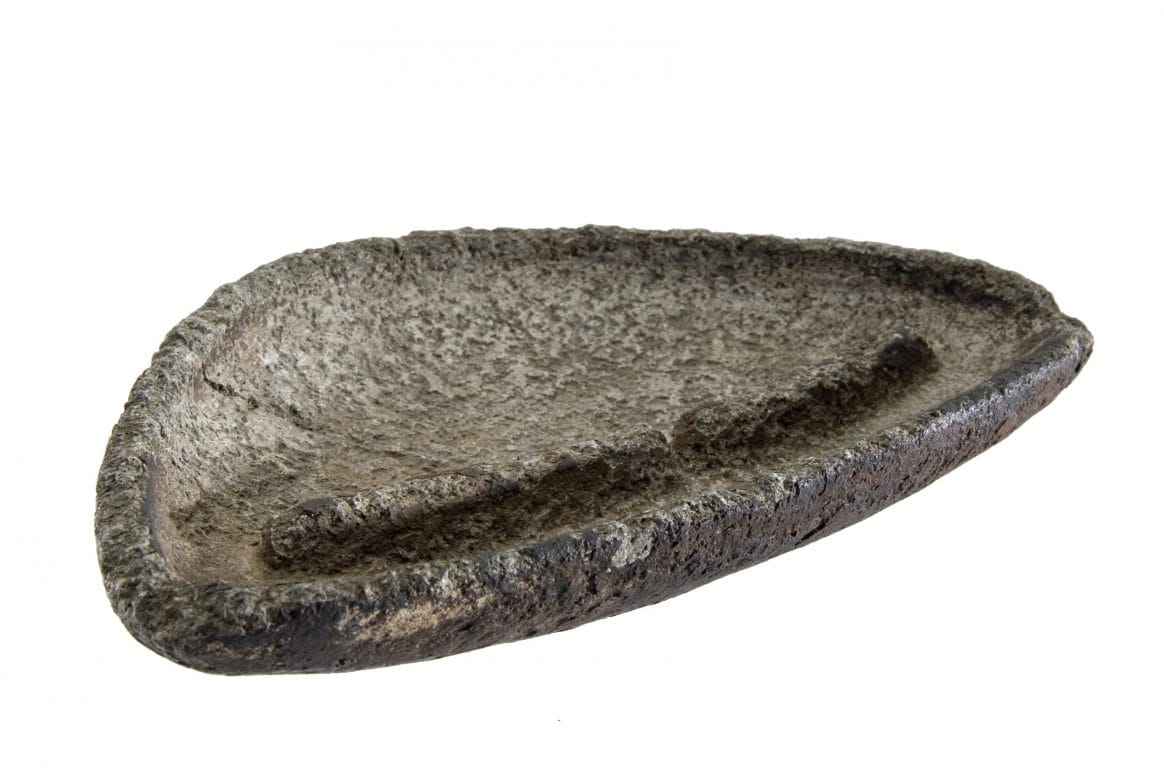
Kudlik
How do you keep warm in a snow house? This object is known in the Inuit language as kudlik. It is a lamp and very important to life in the Arctic as it would provide essential heat and light. It was carved out of soapstone and filled with seal or whale fat, with dried moss for a wick, like a candle. In a snow house, a kudlik could raise the temperature, to warm up and dry clothes at the end of long journeys. Having dry clothes can mean the difference between life and death in such a cold climate. More recently these lamps would be made out of metal.
Inuit peoples have lived in the Arctic for thousands of years. Living off the land was and still is very important to Arctic people. Today most people have moved to towns.
Inuit peoples have lived in the Arctic for thousands of years. Living off the land was and still is very important to Arctic people. Today most people have moved to towns.

Parka
Traditional Inuit clothing was made from animal skins such as caribou or, as here, sealskin. Caribou skin is a slightly warmer material, but sealskin is more water resistant. It was vital the clothing was made correctly, as even the smallest hole can let in cold air, causing frostbite that can kill the wearer. This is a woman’s coat.The large hood and shoulders of this parka allow a child to be carried inside. Children are carried like this from birth until about three years old.
Today, Arctic peoples wear modern man-made materials, but caribou skin is warmer and more comfortable than synthetic material and is still widely used for clothing.
Do you wear any clothing made from animals?
Today, Arctic peoples wear modern man-made materials, but caribou skin is warmer and more comfortable than synthetic material and is still widely used for clothing.
Do you wear any clothing made from animals?

Seal harpoon
How do you catch a seal? Harpoons were used to kill seals. When caught, every part of these animals is used by Arctic people; their meat is stored frozen and eaten all year round, their skins are stitched into warm waterproof clothing, and their bone and sinew were used to make household tools. Almost everything the Arctic peoples traditionally used in their day-to-day lives was made from the animals they hunted.
Arctic people see animals as equals. If an animal is killed they believed that the animal has decided to willingly give its life as a gift. In return it must be treated with respect otherwise the animals might be so offended that they never offer the gift of their lives again.
Do you think you respect the animals that you eat?
Arctic people see animals as equals. If an animal is killed they believed that the animal has decided to willingly give its life as a gift. In return it must be treated with respect otherwise the animals might be so offended that they never offer the gift of their lives again.
Do you think you respect the animals that you eat?
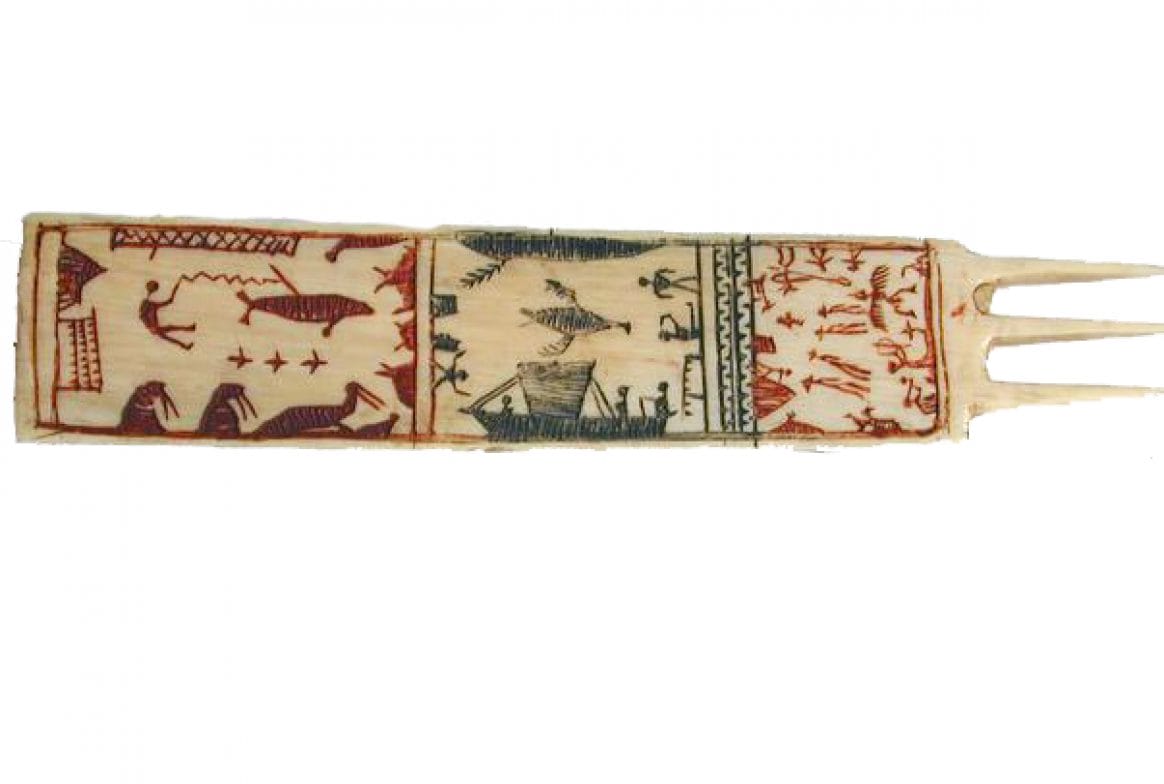
Shredding tool
What animals can you see on this tool? This Inuit tool would have been used for shredding sinew (the tough tendon tissue connecting animals’ muscles to their bones). Sinew was used for sewing, and then later replaced by cotton thread. Women were responsible for making Inuit clothing, and in the past when all clothes were made from animal skins this would have taken nearly all of their time.
Decorating objects with animals is one way to show how vital animals were for everyday life, and how much they were respected.
Decorating objects with animals is one way to show how vital animals were for everyday life, and how much they were respected.
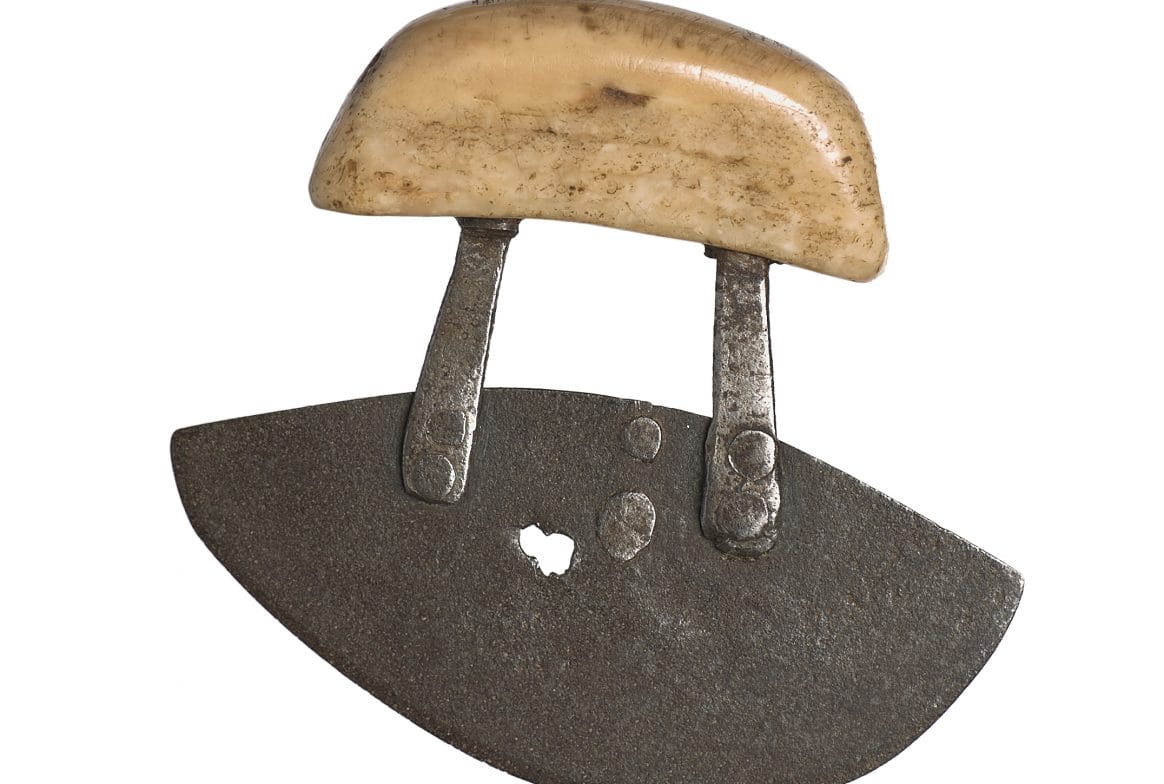
Women’s knife
In the extreme cold, people must wear animal skins to survive. In the Inuit community it was a woman’s job to prepare and make clothing. The animals are hunted and skinned and the hides brought back to their home for the women to prepare. The skins are stripped of flesh and fat with this knife, and then soaked before being stretched in the open and cured (dried out). Nothing from an animal was wasted. The fat could be used for cooking, the skin for clothing, and the tusks for making tools like this walrus ivory knife.
You can see the famous Horniman Walrus in the Natural History Gallery.
You can see the famous Horniman Walrus in the Natural History Gallery.

Seal skin boot
Caribou, or reindeer (domesticated caribou), and seal skins are the most common materials used for northern footwear. Caribou or reindeer skins are used for winter footwear; sealskins are used for summer. Caribou skins don’t last as long as seal but they are warmer. For example, hunters or fishers wearing caribou skin boots can stand all day on the ice waiting for a seal or fish without getting cold feet.
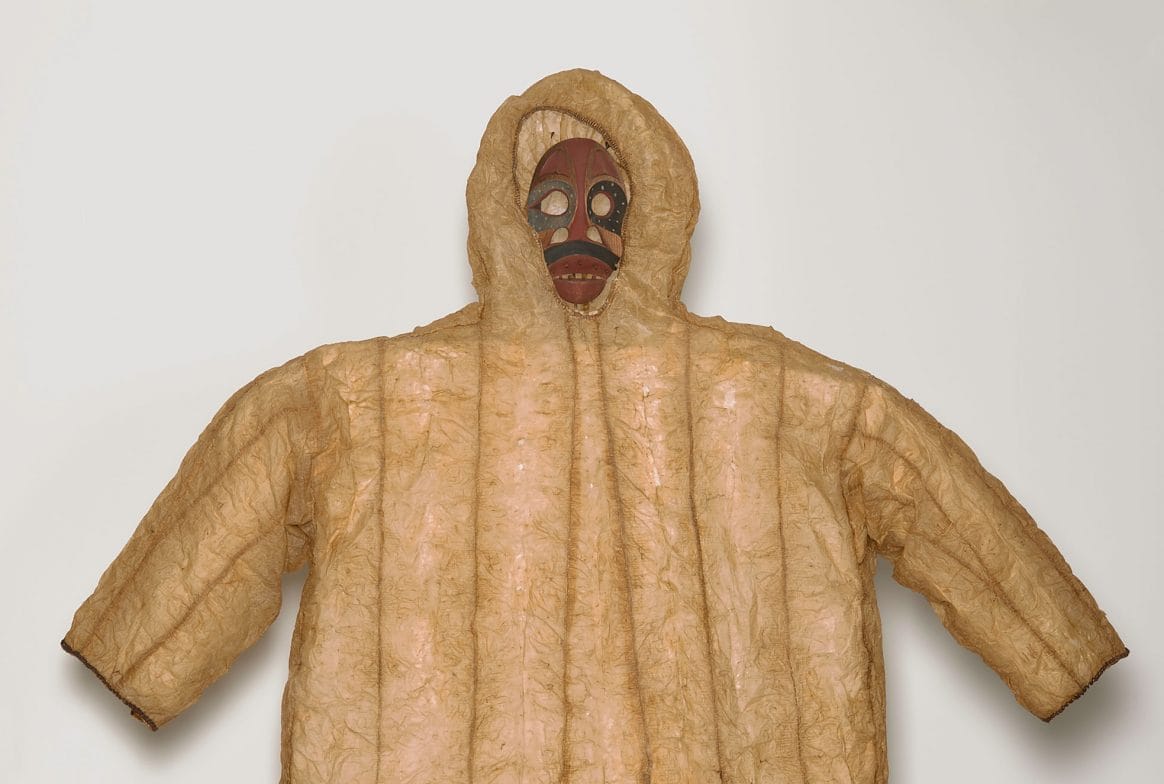
Seal gut parka
This lightweight, waterproof and breathable coat was made from the intestines of sea mammals (seal or walrus). The bottom of the coat could be secured around the opening in a kayak (boat) to keep dry. Keeping dry is vital if you live in the Arctic as getting cold and wet could be fatal.
Arctic people were experts at making waterproof clothing. Seal or walrus gut, cut into strips and stitched together makes an excellent raincoat for keeping out freezing water, snow and ice.
Do you wear clothing made from animals?
Arctic people were experts at making waterproof clothing. Seal or walrus gut, cut into strips and stitched together makes an excellent raincoat for keeping out freezing water, snow and ice.
Do you wear clothing made from animals?
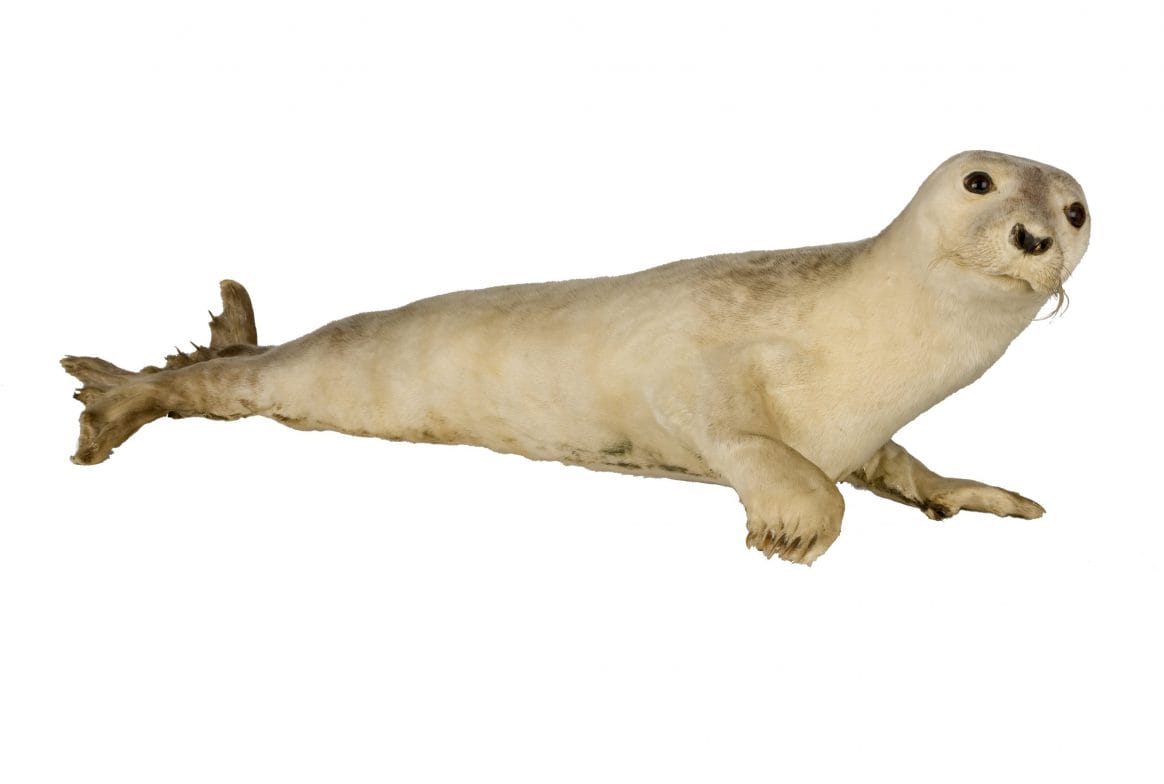
Seal
Seals are mammals and need to keep warm to survive in icy cold waters. They have a thick layer of blubber under their skin as insulation. Their waterproof skin keeps the cold away from their bodies and their streamlined shapes helps them to glide through the water.
Animal fat is one of the most important foods for people living in the Arctic. It provides essential energy to survive the extreme cold, and is also used as fuel for lamps. Seal skin is waterproof, making it a good choice for making clothing. The Inuit people make warm sealskin boots and capes, particularly useful for staying dry when hunting from kayaks (boats). Getting wet and then cold in the Arctic could be very dangerous. Being exposed to extreme cold can cause frostbite or hypothermia.
Animal fat is one of the most important foods for people living in the Arctic. It provides essential energy to survive the extreme cold, and is also used as fuel for lamps. Seal skin is waterproof, making it a good choice for making clothing. The Inuit people make warm sealskin boots and capes, particularly useful for staying dry when hunting from kayaks (boats). Getting wet and then cold in the Arctic could be very dangerous. Being exposed to extreme cold can cause frostbite or hypothermia.
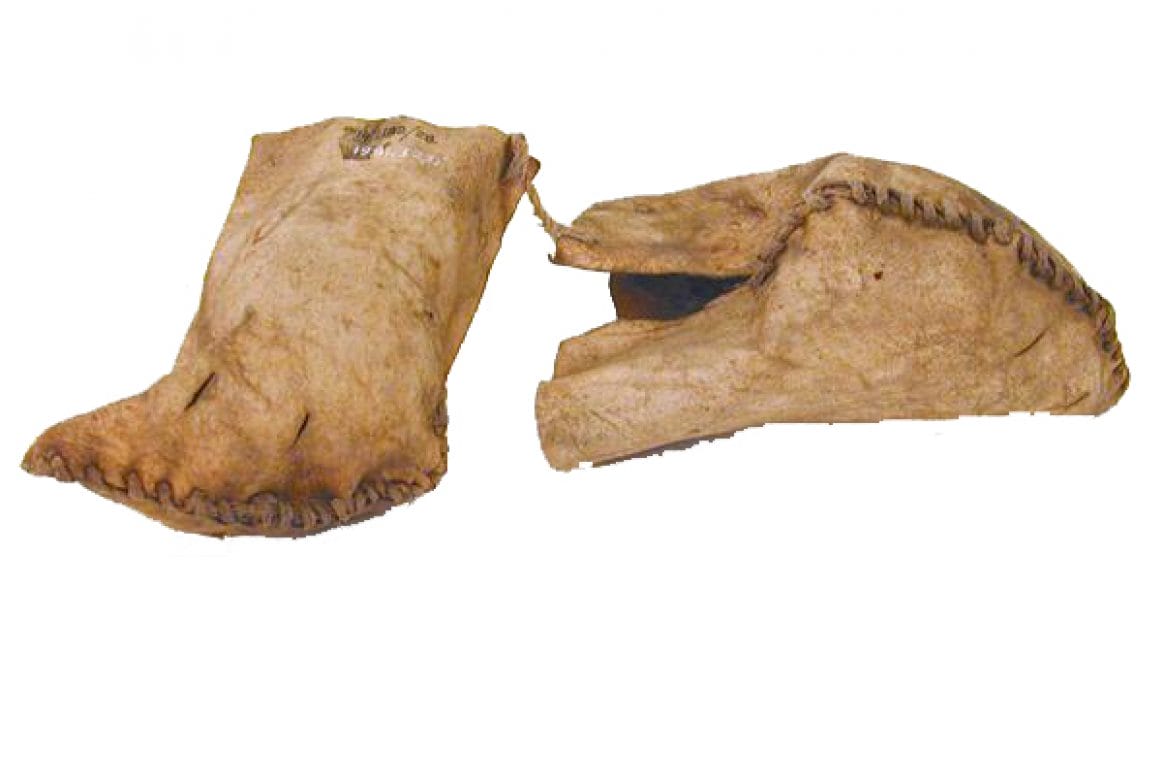
Dog shoes
Dogs were kept by Arctic peoples in packs that pulled sledges over the ice. These dog teams gave Arctic people the ability to travel long distances between camps, and in search of food. Dogs also offered protection against polar bears, which often competed for food and territory with Arctic communities. In spring, when the ground wasn’t covered by soft snow, dogs may have needed boots to protect their feet from the rough ground.
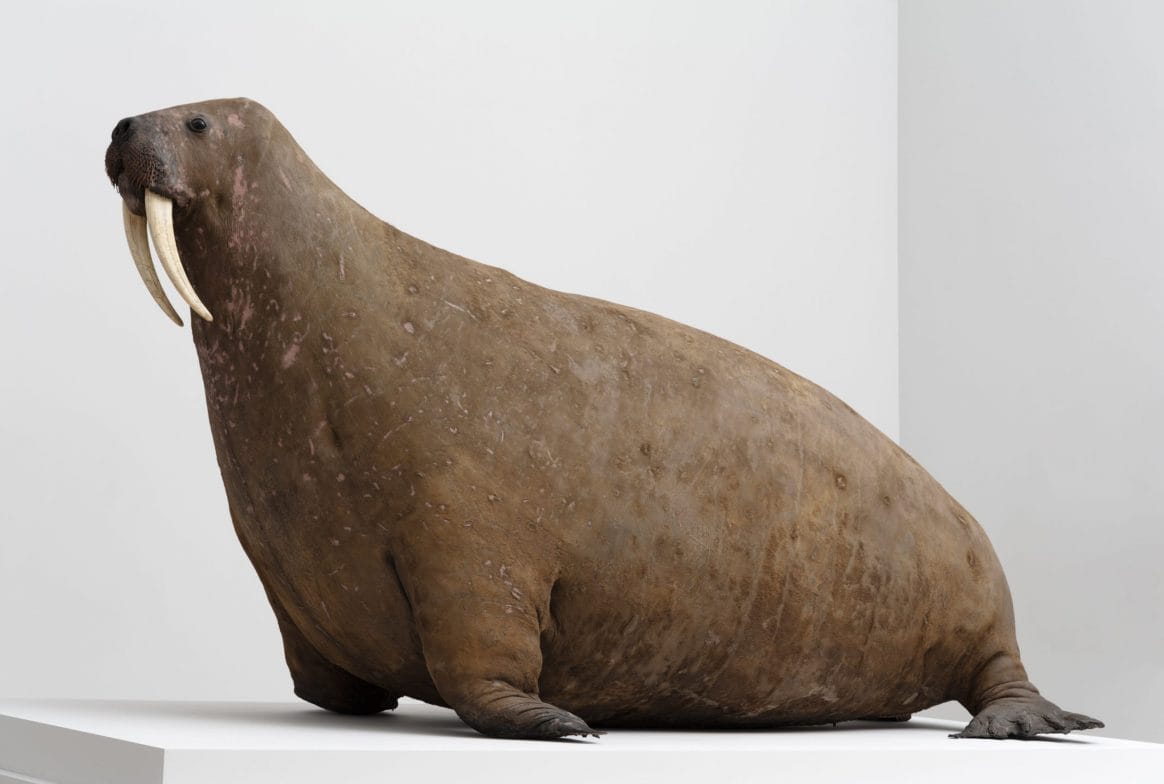
Walrus
How does a walrus keep warm? As a mammal, the walrus has to keep warm despite living in freezing temperatures as they are warm blooded. So it has a thick layer of blubber under its thick skin for insulation. This can be up to 10cm thick! The blubber also stores energy until it’s needed.
The Inuit would use walrus skin and guts for clothing, and blubber for fuel. Walrus tusks would be made into tools. Nothing would be wasted, as the animal’s life was believed to be given as a gift and was respected.
The Inuit would use walrus skin and guts for clothing, and blubber for fuel. Walrus tusks would be made into tools. Nothing would be wasted, as the animal’s life was believed to be given as a gift and was respected.

Snow goggles
Do you need sunglasses in the snow? Yes! Snow blindness is a big problem in the arctic. Imagine how dazzling the reflection of the sun can be off the ice. Snow goggles were the solution. They were made of wood, bone or ivory, and designed to let a small amount of light in. Inuit hunters & travellers would wear goggles like these to help focus on their prey or destination, to avoid becoming lost or going hungry. How do you protect your eyes from the sun?
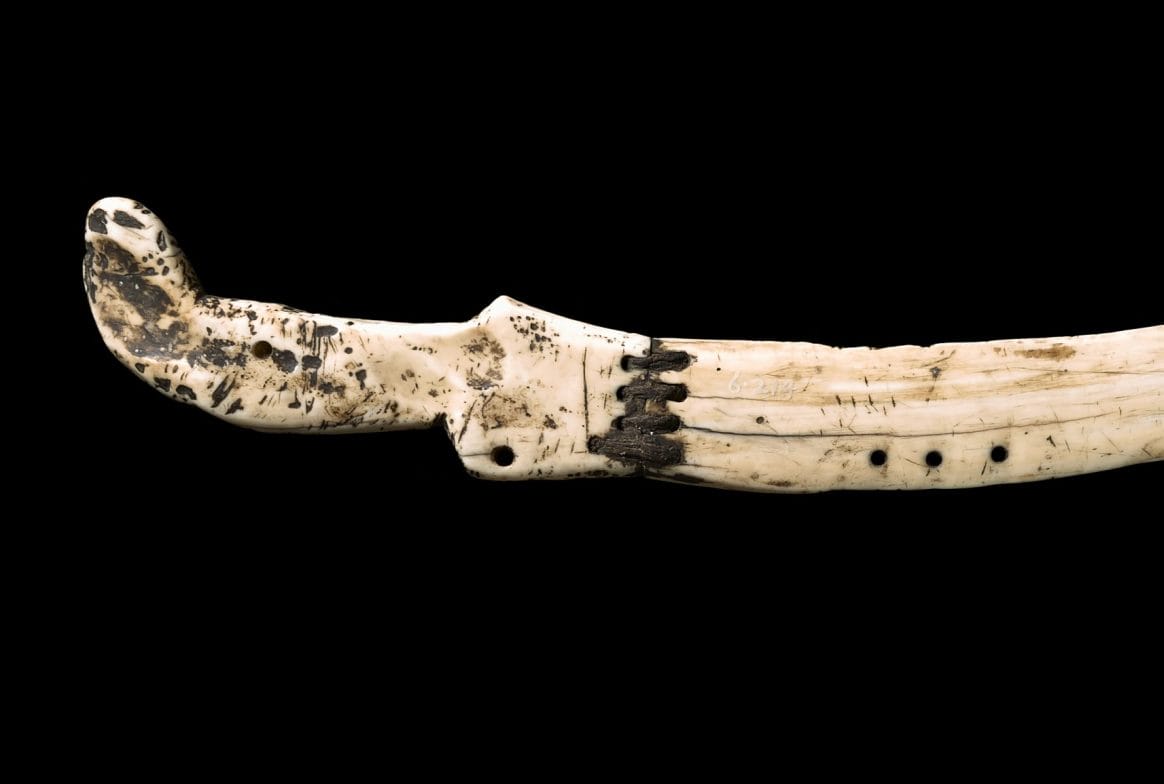
Snow knife
What would you use a snow knife for? This knife is made of walrus ivory (tusks) and were used by the Inuit to cut blocks of snow, to build snow houses as shelters during the winter months. Snow houses are surprisingly warm because snow makes an excellent insulator, as it traps a lot of air. When outside temperatures dip as low as -45 °C, inside the snow house it could be a cosy 16 °C from people’s body heat alone.












